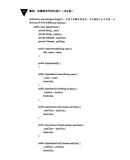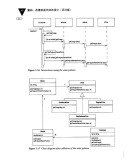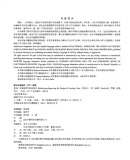书籍详情
![《重构:改善既有代码的设计》[58M]百度网盘|亲测有效|pdf下载](/uploads/s0309/1e5f2d64-44a1-4b3a-8721-befa6444cb7a.jpg)
![《重构:改善既有代码的设计》[58M]百度网盘|亲测有效|pdf下载](/uploads/s0309/1e5f2d64-44a1-4b3a-8721-befa6444cb7a.jpg)
重构:改善既有代码的设计
- 出版时间:2011-06
- 热度:10435
- 上架时间:2024-06-30 09:08:33
- 价格:0.0
书籍下载
书籍预览
免责声明
本站支持尊重有效期内的版权/著作权,所有的资源均来自于互联网网友分享或网盘资源,一旦发现资源涉及侵权,将立即删除。希望所有用户一同监督并反馈问题,如有侵权请联系站长或发送邮件到ebook666@outlook.com,本站将立马改正
内容介绍
编辑推荐
MartinFowler和本书另几位作者清楚揭示了重构过程,他们为面向对象软件开发所做的贡献难以衡量。《重构——改善既有代码的设计(评注版)》解释了重构的原理和佳实践,并指出何时何地你应该开始挖掘你的代码以求改善。本书的核心是一系列完整的重构方法,其中每一项都介绍一种经过实践检验的代码变换手法的动机和技术。某些项目如ExtractMethod和MoveField看起来可能很浅显,但不要掉以轻心,因为理解这类技术正是有条不紊地进行重构的关键。本书所提的这些重构手法将帮助你一次一小步地修改你的代码,这就减少了过程中的风险。很快你就会把这些重构手法和其名称加入自己的开发词典中,并且朗朗上口。
内容简介
重构,一言以蔽之,就是在不改变外部行为的前提下,有条不紊地改善代码。多年前,正是本书原版的出版,使重构终于从编程高手们的小圈子走出,成为众多普通程序员日常开发工作中不可或缺的一部分。《重构:改善既有代码的设计(评注版)》也因此成为与《设计模式》齐名的经典著作,被译为中、德、俄、日等众多语言,在世界范围内畅销不衰。
Martin Fowler等著的《重构:改善既有代码的设计(评注版)》凝聚了软件开发社区专家多年摸索而获得的宝贵经验,拥有不因时光流逝而磨灭的价值。今天,无论是重构本身,业界对重构的理解,还是开发工具对重构的支持力度,都与本书最初出版时不可同日而语,但书中所蕴涵的意味和精华,依然值得反复咀嚼,而且往往能够常读常新。
《重构:改善既有代码的设计(评注版)》力邀国内资深专家执笔,在英文原著基础上增加中文点评与注释,旨在以先行者的学研心得与实践感悟,对读者阅读与学习加以点拨、指明捷径。
Martin Fowler等著的《重构:改善既有代码的设计(评注版)》凝聚了软件开发社区专家多年摸索而获得的宝贵经验,拥有不因时光流逝而磨灭的价值。今天,无论是重构本身,业界对重构的理解,还是开发工具对重构的支持力度,都与本书最初出版时不可同日而语,但书中所蕴涵的意味和精华,依然值得反复咀嚼,而且往往能够常读常新。
《重构:改善既有代码的设计(评注版)》力邀国内资深专家执笔,在英文原著基础上增加中文点评与注释,旨在以先行者的学研心得与实践感悟,对读者阅读与学习加以点拨、指明捷径。
作者简介
Martin Fowler世界级软件开发大师,在面向对象分析设计、UML、模式、XP和重构等领域都有卓越贡献,曾任著名软件开发咨询公司ThoughtWorks的首席科学家。他的多部著作《分析模式》、《UML精悴》和《企业应用架构模式》等都已经成为脍炙人口的经典。


